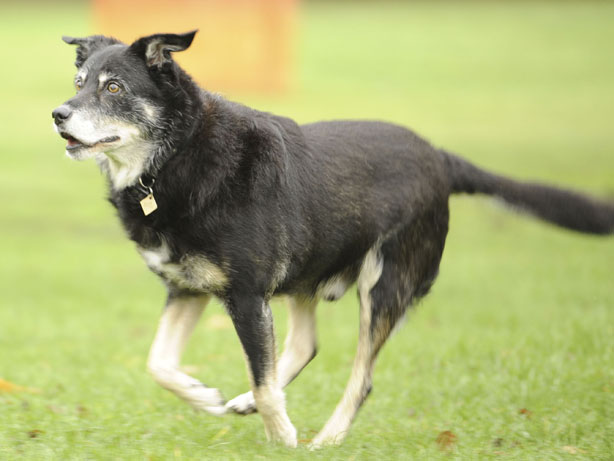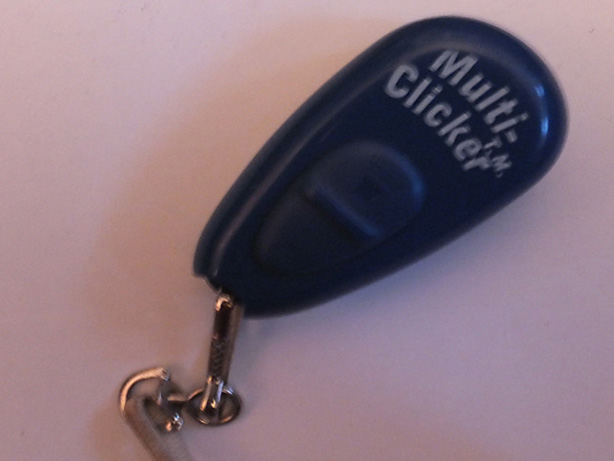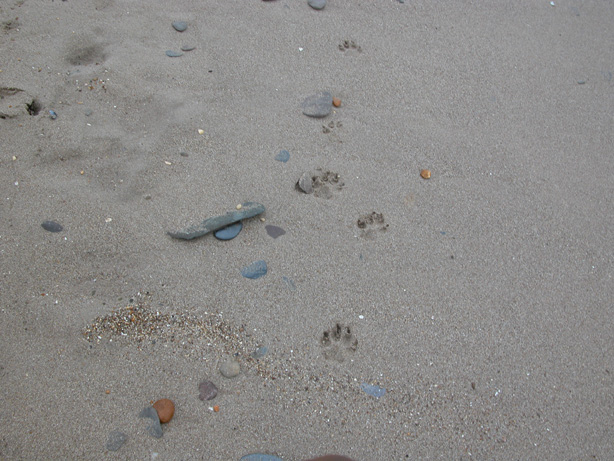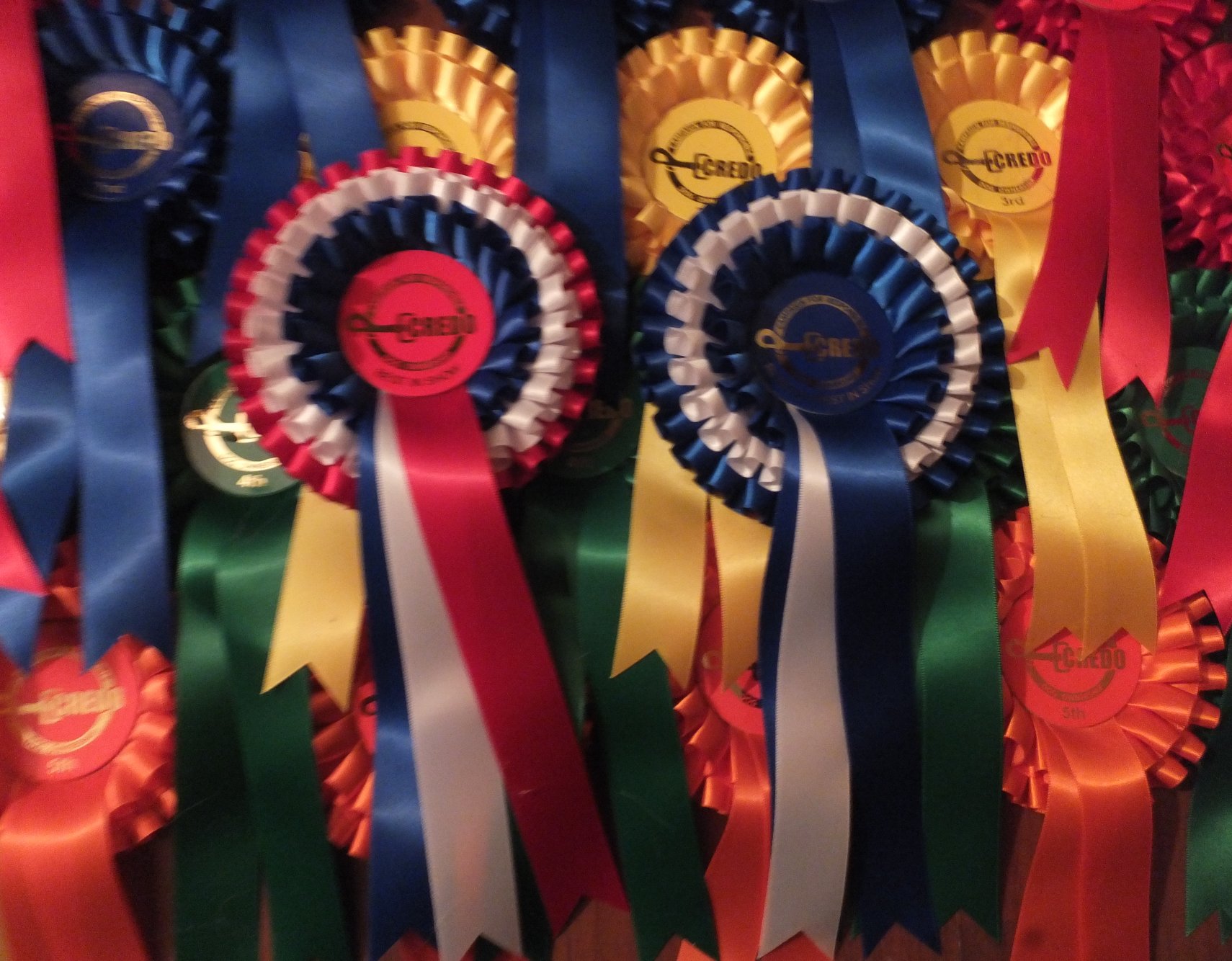
Intangible Cultural Heritage
Vets And The Market
 The Competition and Markets Authority has published a provisional finding following their review into veterinary services which was instigated in September 2023.
The Competition and Markets Authority has published a provisional finding following their review into veterinary services which was instigated in September 2023.
The initial Call For Information elicited 45,000 responses from the general public and 11,000 responses from veterinary professionals – approximately 20% of UK vets. The six large veterinary groups, CVS, IVC, Linnaeus, Medivet, Pets at Home and VetPartners also participated.
UK Veterinary services are worth £6.3 billion per annum but operate with potential conflicts of interest when vets need to provide impartial service whilst also needing to make a profit. The consolidation of services into the hands of non-veterinary owners has led to a situation that the CMA has found is not fit for purpose.
They have made 21 recommendations that will be open to further public consultation until November 2025. The major areas of concern include transparency over practice ownership, provision of medications, referral services, cremation services and out of hours cover and provision of advance information regarding pricing. They have also recommended an urgent review and update of the Veterinary Surgeons Act 1966. The final decision is expected to be published by March 2026.
No Grey(hound) Area
 Scotland has announced that it will join Wales in implementing a ban on greyhound racing. Anyone who knows anything about canine welfare should be incredulous that those who purport to uphold animal welfare – the Green Party being a prime example – could instigate this legislation.
Scotland has announced that it will join Wales in implementing a ban on greyhound racing. Anyone who knows anything about canine welfare should be incredulous that those who purport to uphold animal welfare – the Green Party being a prime example – could instigate this legislation.
There are welfare concerns in the racing world – be that dogs, horses or camels but bans are not an answer. There are are child welfare concerns: should be ban procreation? Of course, many of these self-same people would have us all – and our dogs – eating only plants too.
No one is forced to eat animals or participate in sports that they do not like so why should those that do either or both be forced to forego those pleasures? Please do campaign and legislate to improve welfare in the racing world, but do it from a point of knowledge.
It is far better for dogs to be used for purposes for which they have been bred for generations (in the case of sighthounds for millennia) than be confined to a lead and an urban dwelling. We are preached to about sustainability in the food supply: what is more sustainable than eating game? Farming and hunting have made the landscape that so many deem to be “nature” as if it just appeared, changed and unchanging. The demonisation of both hunting and farming threatens the very countryside that so many see only as a their leisure resource to which they have a “right” of access.
Few will bother to breed greyhounds if racing is banned. Just 20 greyhounds were registered as show dogs by the UKKC. If racing is banned, that may be the only available source of dogs that in fact make an excellent choice for novice owners. Hardly a healthy pool.
If the people that push for banning everything that they don’t like without considering the nuances and implications, we could end up with a world without cherished dog breeds and most livestock that would leave a very depleted countryside and town, literally and culturally.
Dogue About Town
 Dogs are big business. It is estimated that £10 billion are spent annually on UK dogs alone. Advertisers know this and it seems that few advertisements are seen to be complete without the addition of a dog, however irrelevant it is to the product.
Dogs are big business. It is estimated that £10 billion are spent annually on UK dogs alone. Advertisers know this and it seems that few advertisements are seen to be complete without the addition of a dog, however irrelevant it is to the product.
Dogs are also increasingly being seen as being part of family units which has pros and cons. Whilst we undoubtedly treat dogs better than in the past, with responsible breeders raising puppies in the home rather than outdoors and dogs being integrated into society, we are also in danger of increased anthropomorphisation, not to mention commodification.
Dogs need collars, lead, food bowls, toys, bedding and fo course food, but the market does not stop there. Whilst few dogs actually need a coat (thin skinned dogs, old and sick dogs being the exception under certain circumstances), dog clothing is mushrooming. It doesn’t even stop at (unnecessary) coats.
It is not uncommon to see dogs in hats, dresses, spectacles, bow ties, trousers. We not only infantilise dogs in this way, we put them at risk of overheating, never mind the stress that can be caused.
It would seem that the nadir has been reached with fashion magazine Vogue publishing a dog clothing edition (DOGUE). The website claims that it:
“… breaks barriers between human and pet fashion. Its style and design are unprecedented – created for, and by, Millennials.
‘We wanted to create a magazine that would redefine dog fashion and offer an escape from the real world,’ explains Oli Port, Founder and Editor-in-Chief of DOGUE magazine”.
Tragically, these “millennials” have learned nothing from the advances made in canine science in their lifetime. It is ironic that at a time when there was pressure to lay down law recognising sentience in animals and a drive to regard dogs as having “rights”, that their actual existence as a separate species with separate needs is so blatantly disregarded.
Needless to say, the dogs subjected to these ministrations cannot escape from the all-too real world that these humans have created for them.
Happy Birthday Gary Larson
 I always thought that I hated anthropomorphism. Even as a child, Disney made me cringe. Cutsie animals with scary white eyes, out of proportion huge heads and, even worse, scary American child accents. Yuk. I could just about manage talking animals in a book (more like their inner thoughts). I remember being dragged to see Bambi at the cinema and becoming hysterical with laughter when Bambi’s mother was shot. I mean, deer can be a serious nuisance and they are, after all, made of venison.
I always thought that I hated anthropomorphism. Even as a child, Disney made me cringe. Cutsie animals with scary white eyes, out of proportion huge heads and, even worse, scary American child accents. Yuk. I could just about manage talking animals in a book (more like their inner thoughts). I remember being dragged to see Bambi at the cinema and becoming hysterical with laughter when Bambi’s mother was shot. I mean, deer can be a serious nuisance and they are, after all, made of venison.
Then I discovered Gary Larson. The acceptable face of anthropomorphism. His degree was in communication and he has certainly done that with great effect. His genius lies in his ability to get inside the skin of his characters whilst making fun of humans. His dogs are dogs, cats are cats but still the joke is on us.
Two of the greatest must surely be Professor Schwartzman and his bark decoder: what dogs are really saying – “Hey!, Hey!Hey!, Hey!”
and What we say to dogs:
“OK Ginger! I’ve had it. You stay out of the garbage! Understand, Ginger? Stay out of the garbage, or else!”
What they hear:
Blah blah GINGER blah blah blah blah blah blah blah blah GINGER blah blah blah blah blah.
Reverse anthropomorphism if you like.
So happy 75th birthday Gary and thank you.
Ethical Dilemmas
 Party in response to the Covid-19 epidemic in 2020, China officially banned the sale of dog meat. Nevertheless, the annual Yulin dog meat festival was held in defiance of the ban and it is estimated that 10 million dogs and 4 million cats are still being slaughtered for human consumption in China alone.
Party in response to the Covid-19 epidemic in 2020, China officially banned the sale of dog meat. Nevertheless, the annual Yulin dog meat festival was held in defiance of the ban and it is estimated that 10 million dogs and 4 million cats are still being slaughtered for human consumption in China alone.
South Korea recognised that, however unpalatable (literally) to some sensibilities, the eating of dog and cat meat is deeply rooted in many Asian cultures and has attempted to phase out the practice over three years from 2024 to give vendors an opportunity to seek alternative livelihoods. After that, anyone violating the sale could be subject to three years imprisonment or a fine of approximately £16,000.
Eating dog is already in decline across Asia, but that does not stop the, often inhume, slaughter of millions of animals, hence the desire of governments to stamp out the trade rather than wait for it to fizzle out.
Few would argue that this should eventually make life better for dogs and cats but, in the meantime, there is problem of what to do with animals that have already been earmarked for slaughter. Life is not neat. Even though the processing of dogs will be legal in South Korea until 2027, dog meat farmers are finding it difficult to sell the dogs that they have already. Many may not be suitable for life as a companion animal or will require intensive remedial support which is likely not to be undertaken and even be affordable for anyone willing to take in a dog.
Ironically, it may result in mass culling of dogs which, whilst it may seem almost as bad as slaughtering them for the meat trade, will at least mean that they have a humane and quick death and will not result in a ticking time bomb of thousands of un-rehomeable dogs languishing in kennels for the rest of their lives.
Pork Barrel Politics Sullies The Send
 A disgraceful deal was done in the Welsh parliament today when the livelihoods and pleasure of all that participate in greyhound racing in Wales was bartered in exchange for votes for a budget.
A disgraceful deal was done in the Welsh parliament today when the livelihoods and pleasure of all that participate in greyhound racing in Wales was bartered in exchange for votes for a budget.
Just like the forced imposition of the (anti-)Hunting Act 2004 via the Parliament Act, the smoke screen of animal welfare has been used to support a blatant political manoeuvre.
There are undoubtedly welfare concerns within greyhound racing and concerns regarding the gambling industry. However, these should be addressed honestly with proper debates, not slithered through on a shady political deal.
So now, whilst it will soon be illegal in Wales to enjoy watching dogs do what they have been bred for millennia to do, people can still electrocute their dogs with shock collars with impunity. I suggest that the perpetrators of this dishonest legislative move have hands on experience of the consequences, not least the possibility that many greyhounds will now be euthanised for no other reason than some people don’t enjoy canine sports.
Access All Areas
 Generally speaking, extending the scope of areas where dogs are allowed is a positive thing. It’s good for owners and certainly good for business given that approximately one third of people in the UK own at least one dog.
Generally speaking, extending the scope of areas where dogs are allowed is a positive thing. It’s good for owners and certainly good for business given that approximately one third of people in the UK own at least one dog.
However, the most important consideration should always be, is it good for dogs? Obviously, dogs need access to suitable areas where they can enjoy time off lead and have an opportunity to meet other dogs, where this is appropriate. Here, there are more and more restrictions being imposed due to poor behaviour by owners who do not train their dogs and have poor control and/or poor etiquette. Commercial dog walkers can also cause problems by taking out multiple dogs.
Just as not all dogs enjoy being loose in spaces with lots of other dogs, not all dogs enjoy being taken everywhere that their handler goes. The stress that builds as a consequence can lead to dog-on-dog or dog-on-people incidents in the short term and behavioural and even clinical problems in the medium and long term.
Not all dogs enjoy cafés and restaurants. Small and nervous dogs can be intimidated by the forest of legs and people leaning over them. All dogs need to be able to resist the temptation of the smells and (potentially harmful) food that surrounds them and some may just be bored.
Even where shops allow access, confined spaces can be stressful for dogs and handler’s attention will be focused on shopping and not their dog so that the potential for spotting problems is limited.
Taking your dog to work undoubtedly means that you do not need to arrange and probably pay for help with your dog, but not all workplaces are suitable for dogs and not all dogs are suitable for workplaces.
Taking your dog on holiday even for a short period can disrupt the normal routine and might expose your dog to novel diseases and other risks even if not travelling abroad. This is a risk worth taking with a well-adjusted dog, but now a cruise line company is now offering dog-accessible cruises and no doubt more companies will be following suit. This may seem like fun at first glance, but is it really ethical to confine your dog with limited ability to eliminate and exercise and limited choice about mixing with strange dogs?
Similarly, cinemas are offering dog-friendly screenings which again may be fine for a well adjusted dog that will happily settle among strange dogs and tolerate the environment, but it is hardly necessary. A dog was even carried into the Royal Albert Hall for a carol concert last December which is absolutely not a suitable environment.
The impetus for welcoming dogs will undoubtedly grow as businesses grasp any chance of trade in an unfavourable economic climate, but it is rarely done with primary consideration for the dog. Owners are poor at observing stress signals in dogs which can mean that dogs escalate potentially dangerous behaviour when afraid or uncomfortable and appear to react “out of the blue” in other circumstances.
Lack of resilience in dogs is a common problem and, ironically, may be the reason that owners do not leave their dog alone, even for short periods. Unfortunately, exposing such dogs to even more stress in an unsuitable (for the dog) environment will only make the situation worse.
“Access All Areas” isn’t a good idea for dogs. Resilience and tolerance can be improved by positive reinforcement training from a qualified professional, but even then, sometimes it is better to leave the dog at home.
A Final Thank You
 Just as we edged into the new year, news came through that Karen Pryor has died.
Just as we edged into the new year, news came through that Karen Pryor has died.
Karen had been living with dementia for some time. Always a cruel disease it seems especially hard when it hits minds like Karen’s.
In her long life, she built upon work of early behaviourists and brought their theories and practice into the world of many, many people and animals.
On the way she changed many lives for the better and has left the legacy, not only of her writings and videos, but of the Karen Pryor Academy.
Those of us who have graduated from her training course pledge to continue her work and she will be forever in out minds and in our methods.
Thank you Karen, for al of it.
Taking A Lead
East London council Tower Hamlets is proposing that dogs should be on lead at all times in all areas of the borough. The council has reacted to what they identify as “a recent spate of high-profile incidents involving out of control nuisance dogs and their owners”, further stating that “Many residents are nervous about the presence of large and intimidating-looking dogs in the borough’s parks and green spaces.”
It is certainly true that the number of fatal dog attacks has increased hugely, particularly in the last three years, but such incidents are still incredibly rare. Non-fatal incidents are poorly and consistently recorded and are probably under-reported so are difficult to assess. An FOI request made by the BBC resulted in those police forces that responded (in England and Wales) recorded 30,539 offences of an out-of-control dog causing injury to a person or guide dog in 2023. This represents a 21% increase from those recorded in 2022. Whilst this is concerning, knee jerk reactions that restrict all dogs and punish responsible owners is never gong be the answer. The very fact that there has been an increase in incidents proves that the prohibitions of the Dangerous Dogs Act 1991 are an abject failure.
The key to the problem in both the DDA and this proposed PSPO lies in the phrase “intimidating-looking dogs”. No doubt some sections of society purchase dogs precisely because they are perceived as being intimidating, either because they wish to intimidate or they wish to repel others who may be perceived as a danger, much in the same way that people claim to carry knives and guns for their own protection. Again, a 10st XL Bully is going to be more of a problem than a 10kg dog but a bite from the smaller dog is still capable of causing significant injury and, in the unlikely event that a major artery were severed, could also potentially prove fatal. Of course, any puncture wound provides a potential for fatal infection too.
Focusing on what dogs look like rather than how they are behaving and the emotional signals that they provide will led to yet more restrictions and yet more failure. Restriction of off lead exercise also has the potential to cause more incidents as dogs and humans become frustrated. Blanket restrictions hugely disadvantage time and resource poor owners who may not be able to travel out of borough to let their dog off lead on a regular basis.
The council run consultation closed in November and, in addition to the official responses, has engendered a wave of protest from locals and the wider dog community. Cash-strapped councils lack the resources to police such impositions and the cynical may feel that fixed penalty notices of £100 per violation may be a revenue raising venture. Un-policed legislation merely increases the ability of irresponsible owners who have no intention of complying with regulations and laws that they have caret blanche to behave as they want whilst compliant owners are forced to restrict their dogs for no reason.
Both owners and the council require education in dog behaviour because even dog wardens and Dog Legislation Officers are not behaviourists and may not have a full understanding of the consequences of draconian bans.
The root of the solution, as ever, lies in education and training using positive reinforcement techniques.
Time for the enlightened to take the lead.





